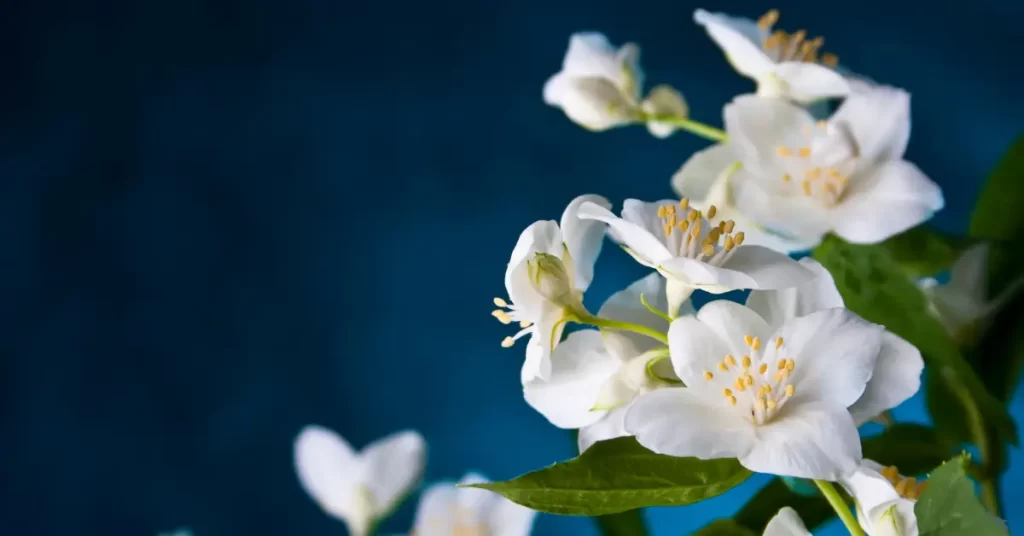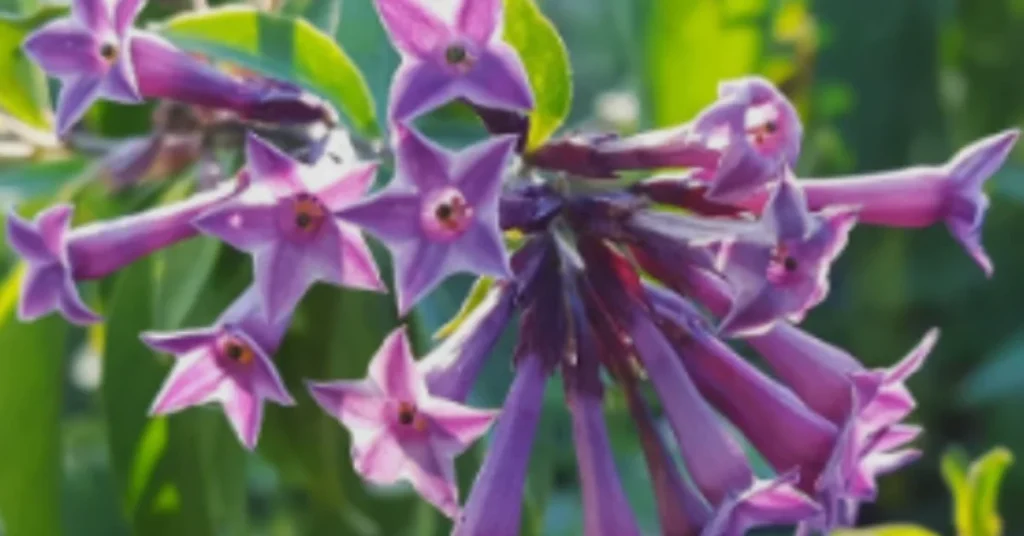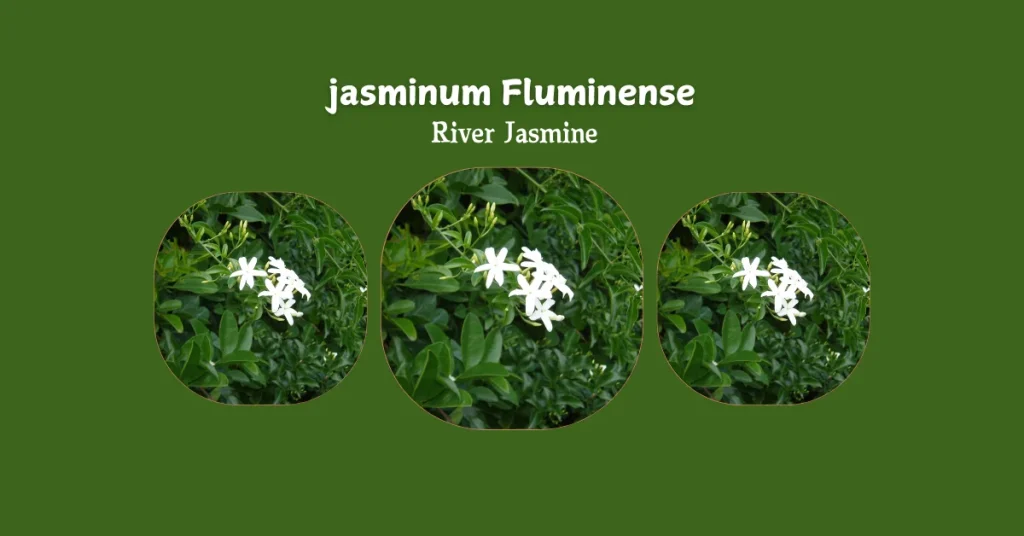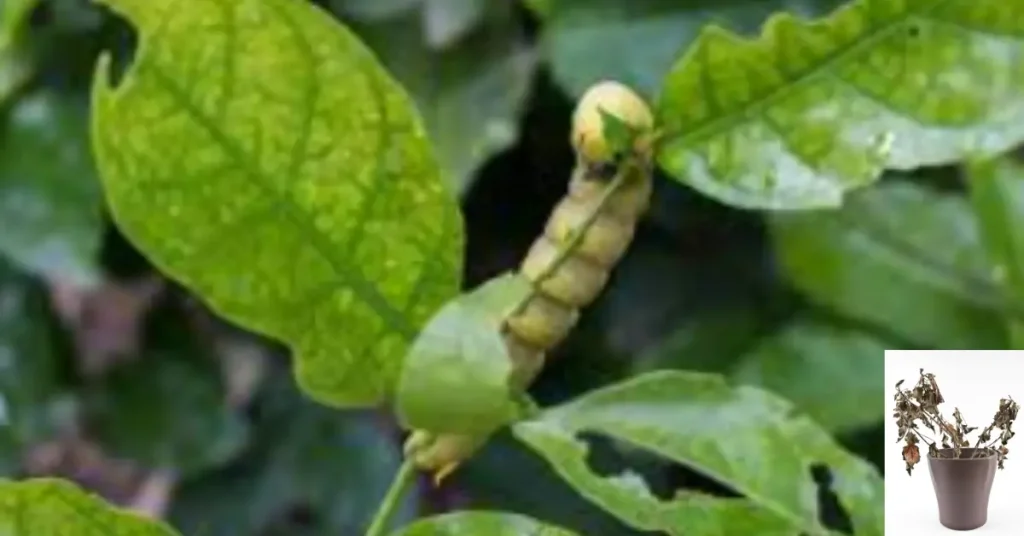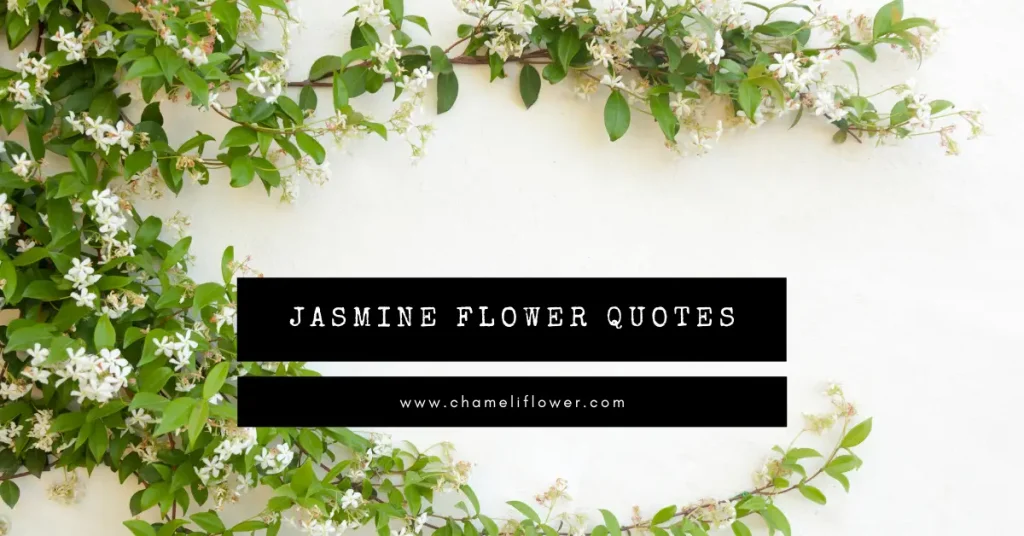Jasminum Abyssinicum: Forest Jasmine
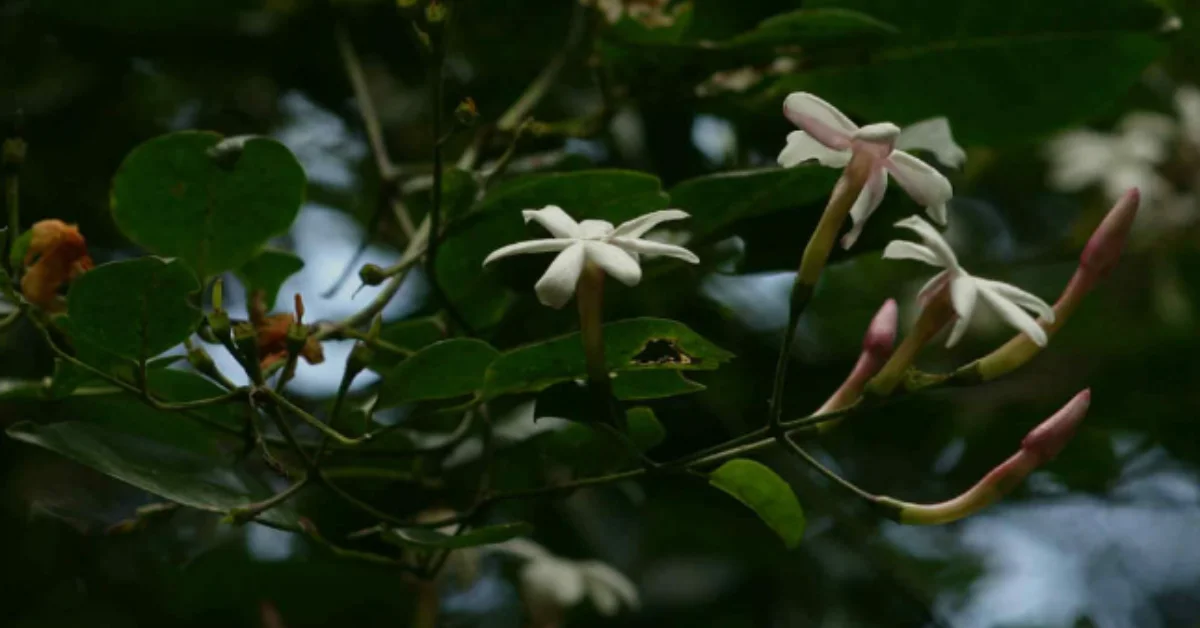
More than 200 species of jasmine belong to the family Jasminum, each bring a unique touch of elegance and fragrance to the world. Jasminum abyssinicum commonly known as Forest Jasmine, holds a special place among aromatic climbers. As a strong to slender climber in high-altitude montane forests, Jasmine abyssinicum can reach up to 13 cm in diameter and reach into the forest canopy. It has opposite, trifoliolate leaves with wide, ovate tips. The leaves are dark glossy green and hairless except for a few hairy areas at the leaf axils.
Native to Africa, Jasminum abyssinicum grows from Ethiopia to KwaZulu-Natal, South Africa. It is also distinguished from South African specimens by its usually larger, thin, glabrous leaves, and the presence of acarodomatia in the axils of both upper and basal veins.
Eastern forms of Jasmine Fluminense may occasionally display one or more of these features, it is mostly determined by the size or shape of the calyx, which is more or less flat-topped in Jasmine Fluminense, and more oval-shaped in Jasmine Abyssinicum.
Characteristics of Jasminum Abyssinicum
Morphology
With the right support, Jasmine abyssinicum can grow to impressive heights. The plant is characterized by its woody stems, which can reach upto 10 meters long. It is generally a shrub with large numbers of ascending branches. The branchlets are long, thin, terete, ascending, and minutely puberulent.
Three-foliolate, petiole patently spreading 1.5-3.3 cm long, minutely puberulous, terminal leaflets ten to twenty mm long; leaflets usually oblong to orbicular-oblong and are usually short and acuminate at the apex.
The leaves bear terminal and lateral inflorescences, and the branches have minute puberulous puberules. Similarly, pedicels range in length from 4mm (in terminal flowers) to 15mm (in lateral flowers).
Flowers
Its blooms are white tinged with pink on the outside, and emit an intoxicating fragrance, particularly in the evening. Flowers appear in the form of cymose inflorescences, each consisting of several small, star-shaped blossoms. Each flower features five to nine petals, giving it a delicate, intricate appearance. Late spring to early summer is the flowering season for Jasmine abyssinicum, depending on the climate.
Fruit
After flowering, Jasmine abyssinicum produces berry-like fruits (7 mm long) that are initially green but turn glossy black when ripe. The fruits of these plants serve as food for birds and also as part of the plant’s reproductive cycle.
Identification

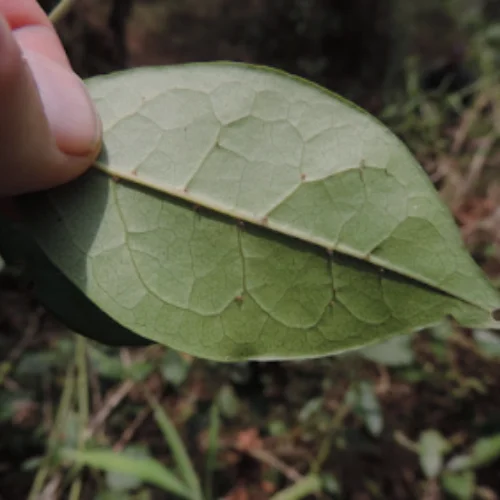
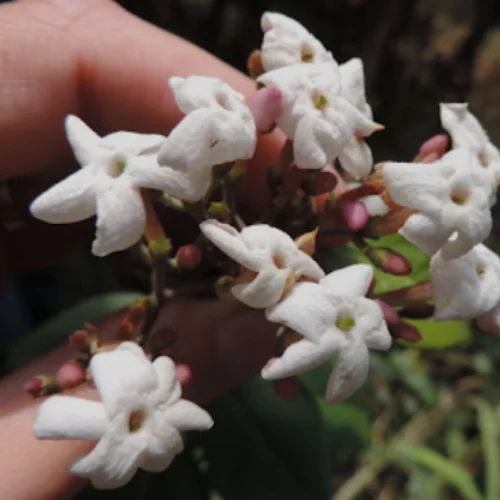
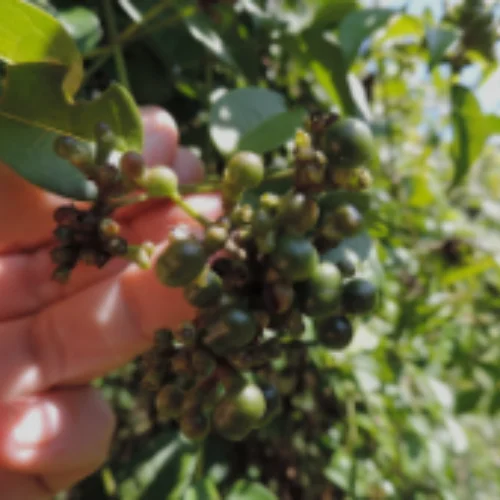
Natural Habitat and Distribution
A high-altitude montane forest with a cool, moist climate is the best habitat for Jasmine abyssinicum. The lush vegetation and misty mornings of these regions provide the perfect environment for this climber. A well-draining soil is ideal for the plant, which permits optimal root respiration and prevents waterlogging.
Jasmine abyssinicum is naturally distributed across a vast area of Africa. There are populations of this captivating vine in countries like Ethiopia, Kenya, Uganda, and South Africa. As a source of food for birds and shelter for various insects, it contributes to the biodiversity of the forest ecosystem in these regions.
Its flowers support biodiversity by supplying nectar to pollinators such as bees, butterflies, and other insects.
Read: How Jasmine Flower Attract Bees
Growing Jasmine Abyssinicum
The Jasmine plant is quite adaptable to both sun and soil conditions. You can plant it in full sun or partial shade, as well as in sandy loam or clayey garden soil that drains well. The jasmine plant thrives in bright sunlight, but it requires protection from direct sunlight during the midday hours.
Adding compost-like moldy leaves to the soil and fertilizing lightly once a year in the spring will improve the soil. Jasmine should receive at least four hours of full sun each day in the winter, ideally in a window.
Can I grow Jasminum abyssinicum?
For those captivated by Jasmine abyssinicum, it can be cultivated outside its native habitat. This versatile climber can adapt to a variety of conditions, whether you’re looking for a fragrant haven in your garden or a piece of Africa on your balcony.
Sunlight
Jasmine Abyssinicum is highly adaptable to sunlight. Although it thrives in full sun but it can also tolerate partial shade. Daily exposure to direct sunlight is crucial.
USDA hardiness zone 8a to 11b: from 10 °F (−12.2 °C) to 50 °F (+10 °C).
Watering and Feeding
Regular watering is essential for Jasmine abyssinicum, particularly during periods of heat and drought. In order to protect the roots, however, it’s crucial to avoid waterlogging. Make sure the soil is consistently moist, but not soggy. To ensure optimal growth and flowering, fertilizer should be applied once a year during the growing season, preferably in spring.
Training and support
As Forest Jasmine climbs, it requires support to grow effectively. Vine growth can be facilitated by strong fences, trellises, or pergolas which provide the ideal structure for gracefully ascending. Gentle training can be used to guide its direction.
Propagation
There are several methods for propagating Jasmine abyssinicum, including seed germination, cuttings, and layering. Cuttings and layering are more popular for their higher success rates and faster growth than seed propagation because of the lengthy germination period.
Cuttings: A moist, well-draining medium works best when treating semi-hardwood cuttings with rooting hormone during the growing season.
Layering: Using this method, the branch is bent to the ground and a section of it is covered with soil so that it can begin to grow roots and leave the parent plant before it is cut off from the branch.
Care and Maintenance
To keep its soil moist, Jasmine abyssinicum requires regular watering, especially during periods of dry weather. Watering too much can cause root rot, so be careful not to overwater. It is essential to prune the plant to manage its growth, remove dead or diseased wood, and promote a bushier habit.
Uses of Jasmine Abyssinicum
Ornamental Use
There is great value placed on Jasmine abyssinicum due to its ornamental qualities. This climbing plant is popular for gardens, arboretums, and trellises, pergolas, and fences because of its fragrant flowers and attractive foliage. Because it can scramble and cover structures, it makes a great addition to vertical gardens.
Screening and Privacy
Gardeners and patios can create natural screens and create privacy with Jasmine abyssinicum’s dense foliage. Adding vines strategically along fences or walls can make a functional as well as visually appealing barrier.
Fragrant Companions
The intoxicating fragrance of Jasmine abyssinicum makes it an ideal companion for other flowering plants. You can create a truly fragrant and breathtaking landscape by pairing it with roses, clematis, or honeysuckle.
Medicinal Use
Many traditional medicines have used parts of Jasmine abyssinicum to treat ailments. The leaves and flowers of this plant are known to have antiseptic and anti-inflammatory properties. Respiratory issues, skin conditions, and digestive problems can be treated with infusions and decoctions made from the plant.
The Maasai people of Kenya use Jasminum abyssinicum as a remedy to treat wounds. Its essential oil boosts libido and induces a joyful and uplifting sensation.
Jasminum abyssinicum is a research topic. Over the lifetime, 6 publications (2005 to 2017) have been published within this topic receiving 83 citations.
Read: Published Papers
Research on the medicinal properties of Jasmine abyssinicum is limited, and future studies are required to explore and confirm medicinal uses.
Cultural significance
As a cultural and historical plant, Jasmine abyssinicum holds great significance in Ethiopia. Symbolizing love and appreciation, the plant is associated with purity and beauty. The fragrant flowers of this plant are used as decorations during traditional ceremonies and festivals.
Conclusion
Jasminum abyssinicum DC., belongs to the plant family Oleaceae.The plant is used by indigenous farmers in Kenya against internal parasites affecting livestock. Although its has many medicinal benefits also but more studies required to explore the full potential of this climber plant.

I am Yasir Riaz, an Agronomist for more than a decade. Helping local farmers and Gardeners to improve their crops and Gardens and overall productivity. In addition to my work in agriculture, I have also delved into the digital world as an SEO writer and blogger. Through my blog, I aim to educate and inspire others about the Chameli Flower (Jasmine).


